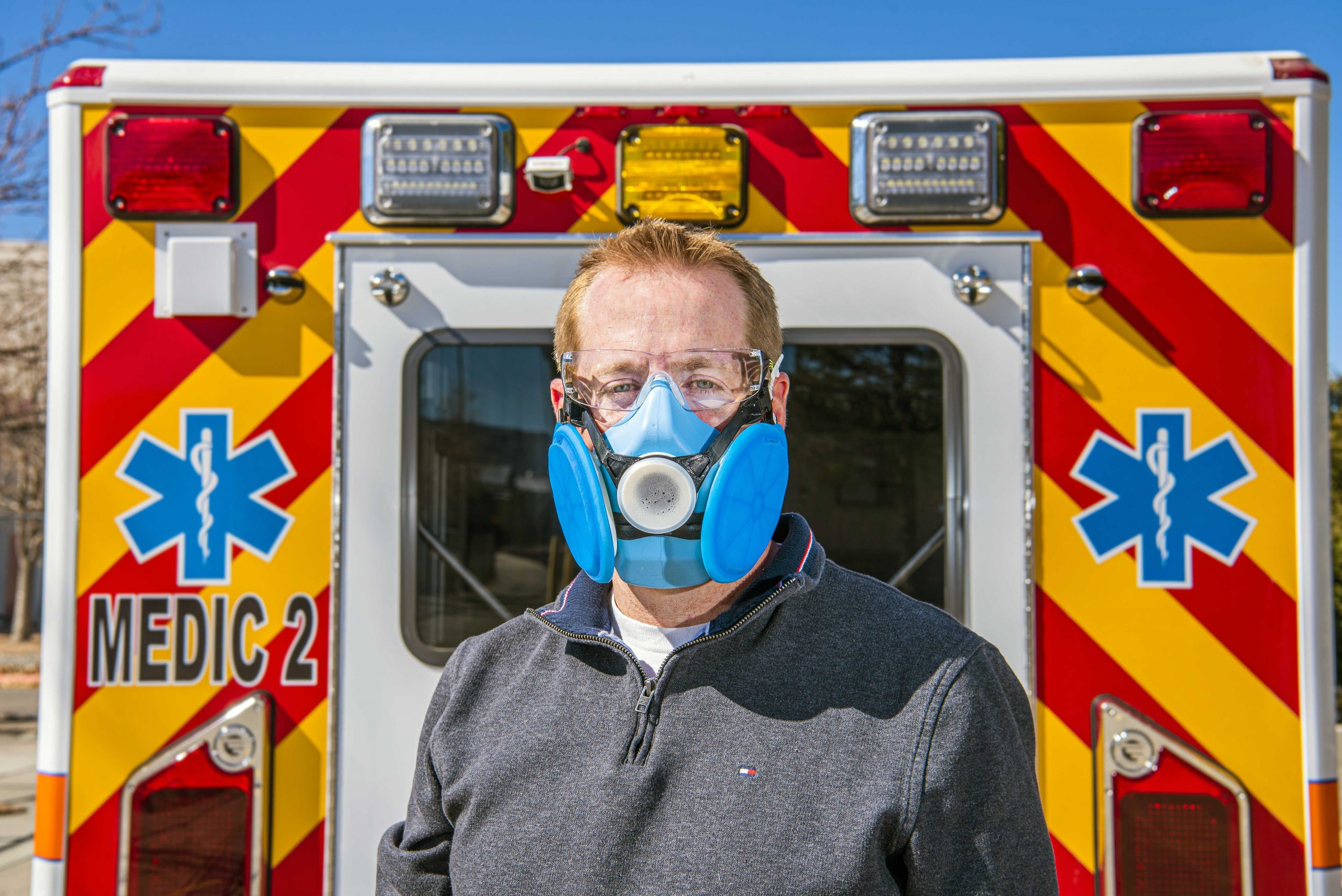ALBUQUERQUE, N.M. — Many medical professionals and other essential, front-line workers have struggled for the past year with persistent shortages of N95 masks. Soon, they might get relief from a Sandia National Laboratories invention — a comfortable, reusable, sterilizable respirator that could ease demand during current or future health crises.

Sandia has filed for patent protection and is testing prototypes and seeking potential manufacturing partners.
“We have developed and tested a preliminary design, which meets many of the requirements for a medical-grade, reusable N95 mask,” said Todd Barrick, an engineer on the project. Requirements for N95 certification include proper filtration, fit and airflow.
Although the Centers for Disease Control and Prevention has recommended ways to safely stretch depleted supplies, rationing during a pandemic is not ideal. Reusing masks can increase health risks to the wearers, and prolonged use can cause acne, sores and rashes. Even using conservation strategies, demand for personal protective equipment still can outpace supply.
The COVID-19 pandemic has uncovered bottlenecks in the supply chain for PPE that is safe for the medical community, “forcing the risky reuse and unsafe invention of stop-gap PPE,” Barrick said.
Sandia’s prototype has been designed for extended, repeated use, meaning hospitals might need only one respirator for each worker.
The mask can be completely disassembled for cleaning between uses and is intended to be compatible with autoclaving, a common sterilization method in hospitals that uses steam and heat to kill microbes. It gently distributes its weight across the whole head. It filters both inhaled and exhaled air with nonproprietary, replaceable N95 material stored inside two disc-shaped cases, protecting wearers and patients. A resonator, like the one on the end of a stethoscope, transmits the wearer’s voice for unstifled communication.
Preliminary test results at Sandia show promise that the mask can meet safety standards set by the National Institute of Occupational Safety and Health, the organization that certifies masks as N95. Further studies are needed to determine how long the mask can be comfortably worn.
Sandia is pursuing partnerships to help complete the testing phase and assess cost-effective production methods. If the research shows the mask meets certification requirements, Sandia plans to license the design to manufacturers.
Scientists retool national security lab equipment to create, test prototypes
A medical respirator might seem an odd thing for a national security lab to make, but when COVID-19 struck, Sandia’s extensive facilities and expert staff were up to the task.
“We can test the respirator fit and filtration applying the same rigor as required for NIOSH certification. Additionally, we can rapidly build prototypes on-site and can perform studies on the fit and performance to quickly get feedback on the mechanical design,” Barrick said. “We are fortunate to have incredible scientists on our team that can analyze decontamination and sterilization of the respirator structure.”
Seventeen researchers put their wide-ranging experience into the design, including mechanical engineers, microbiologists, virologists, materials scientists, fabrication experts and Michael Omana, an aerosol scientist.
An aerosol is a mist of particles or droplets, like hairspray, fog or a virus-laden cough. But at Sandia, aerosol science is a means to detect biological agents in an explosion, contain the spread of chemical vapors or measure airborne particles that betray hidden nuclear weapons programs.
“We take an often-overlooked aspect of day-to-day life, a common phenomenon, and apply it to national security fields,” Omana said.
When respirator shortages began making headlines, Michael and his colleagues responded to the national need by retuning their equipment for COVID-19 research.
In addition to helping with the respirator design, Sandia’s aerosol teams led 11 pandemic-related projects in the last year, many of which tested mask materials and decontamination methods, and have lent support to more projects led by other labs.
“We’ve learned a lot about what works and what doesn’t in terms of structure, materials and production methods,” Barrick said. “We’ve also learned that Sandia can quickly assemble a team with all the skills needed to develop and test medical-grade respirators.”